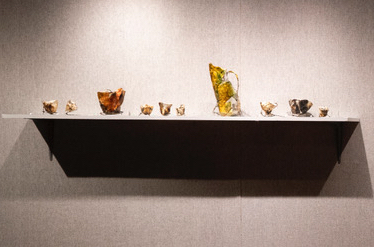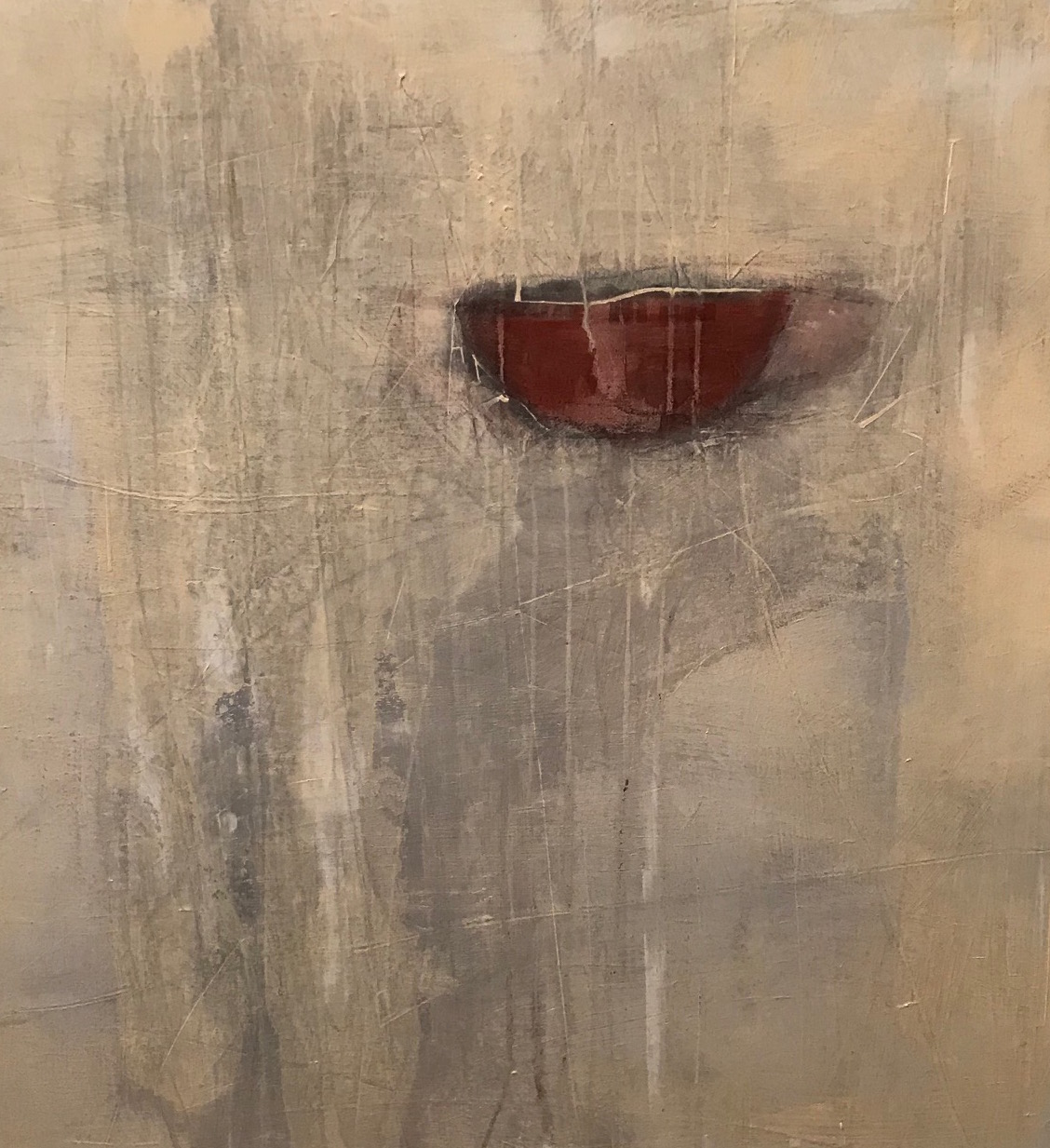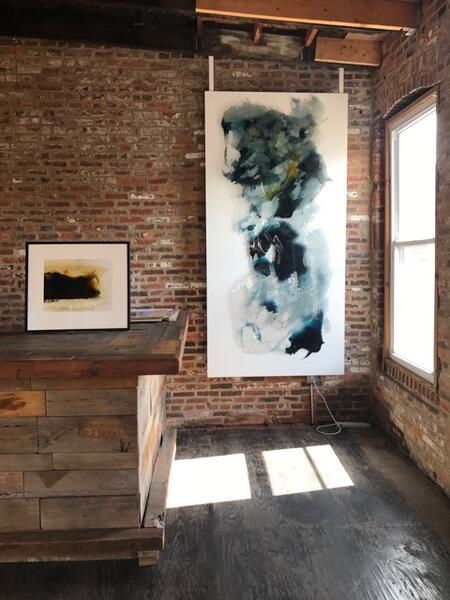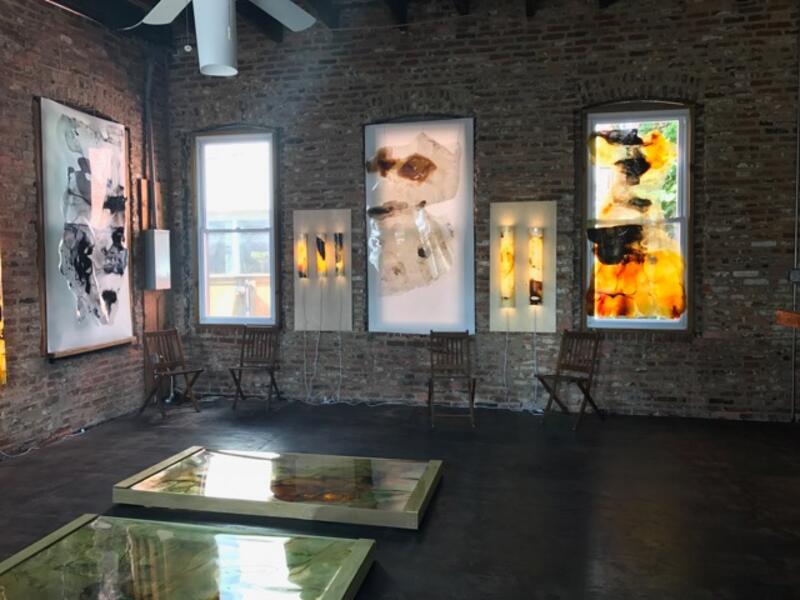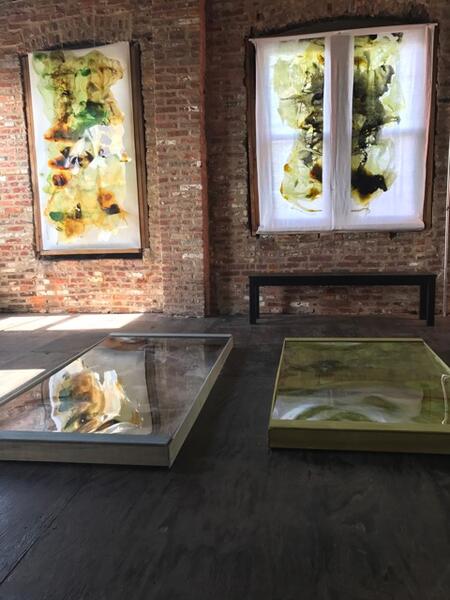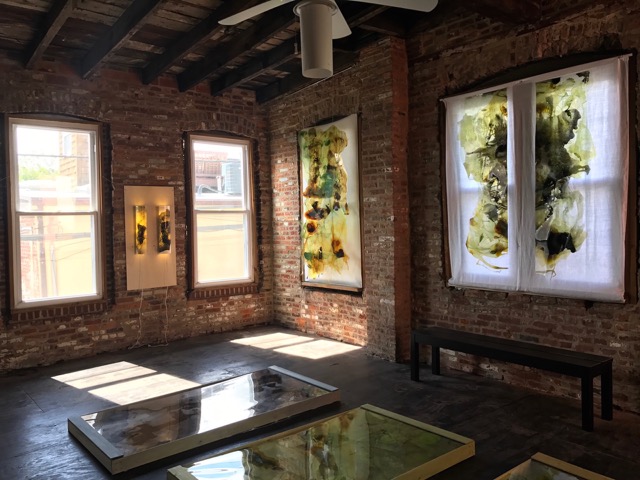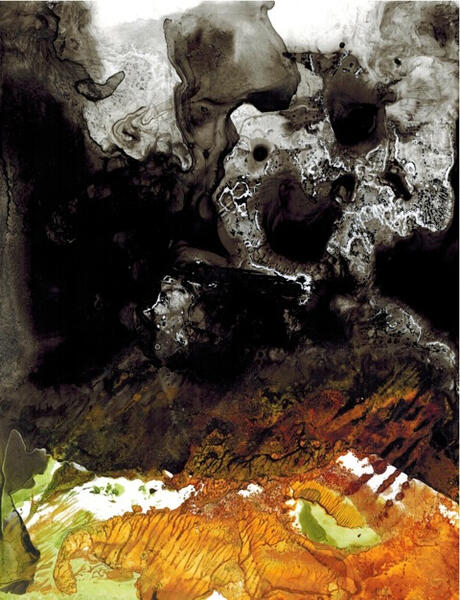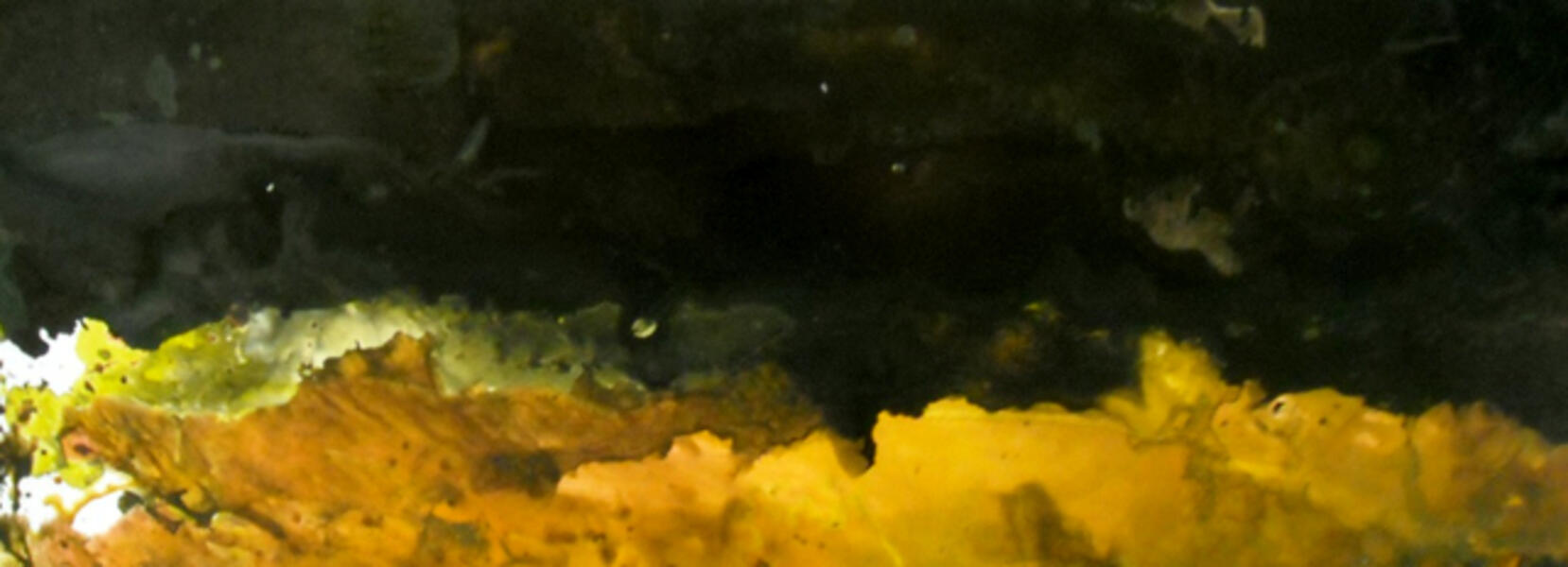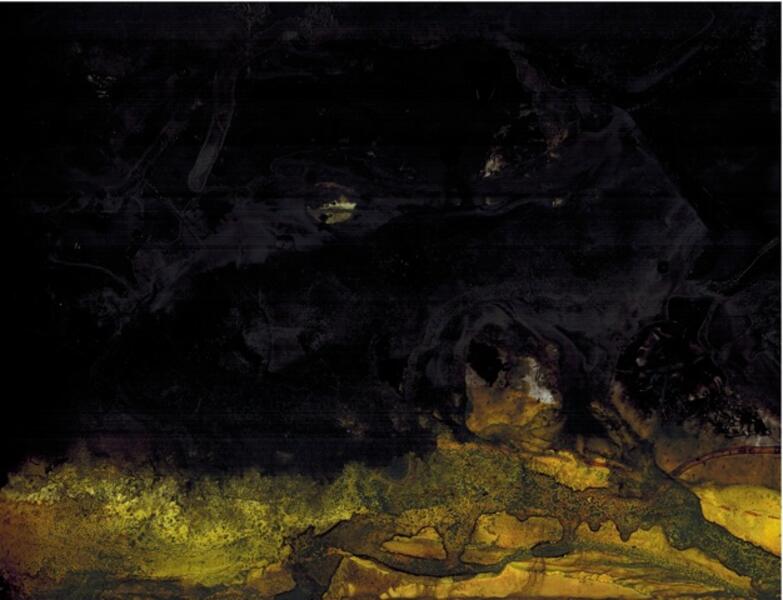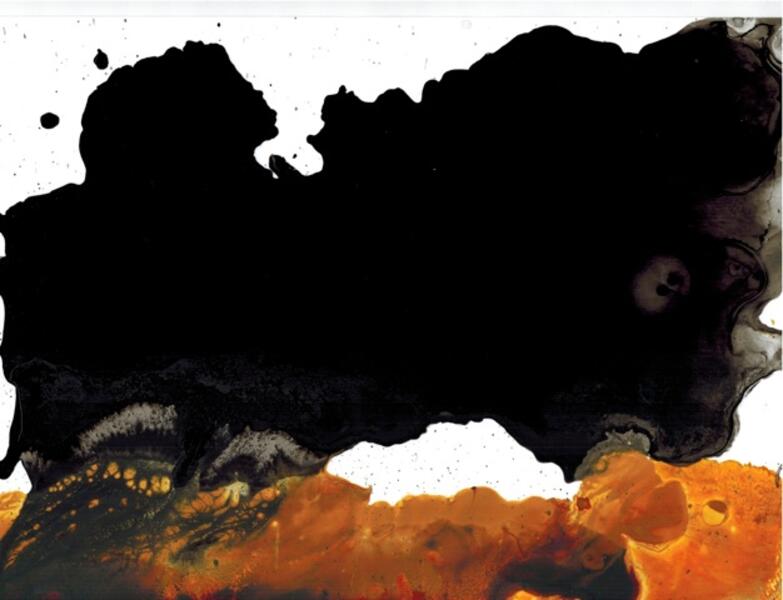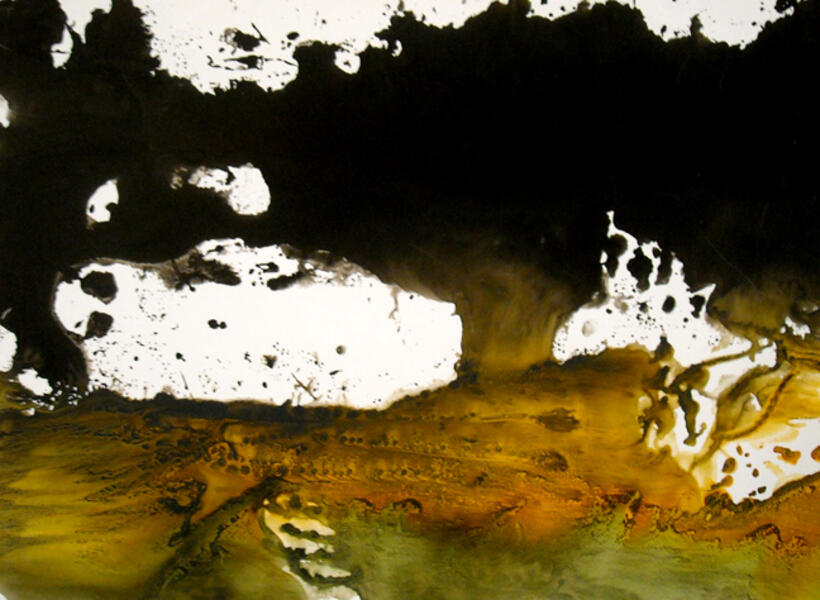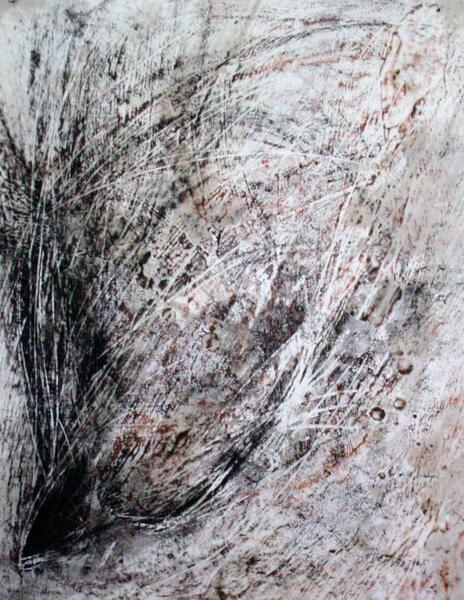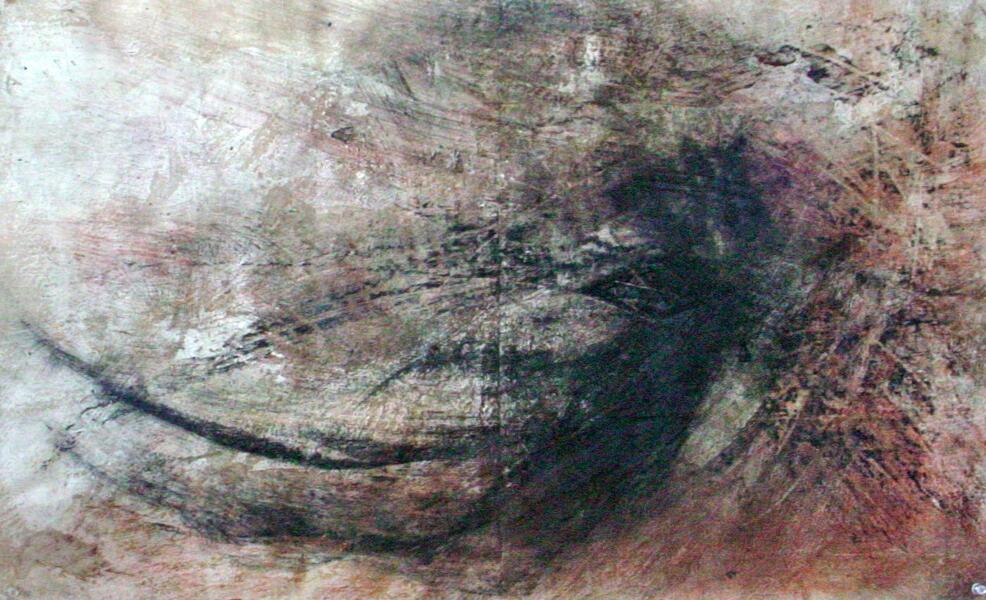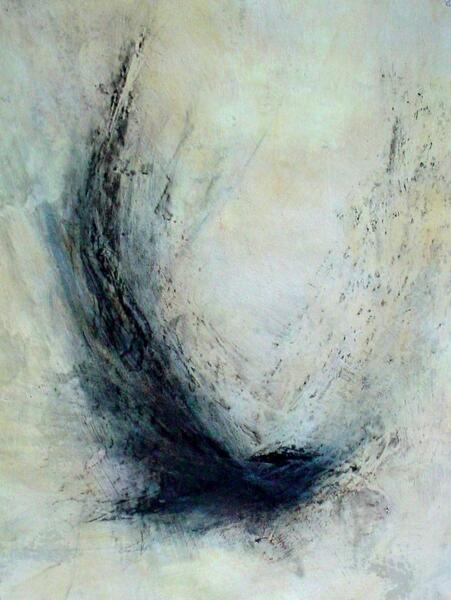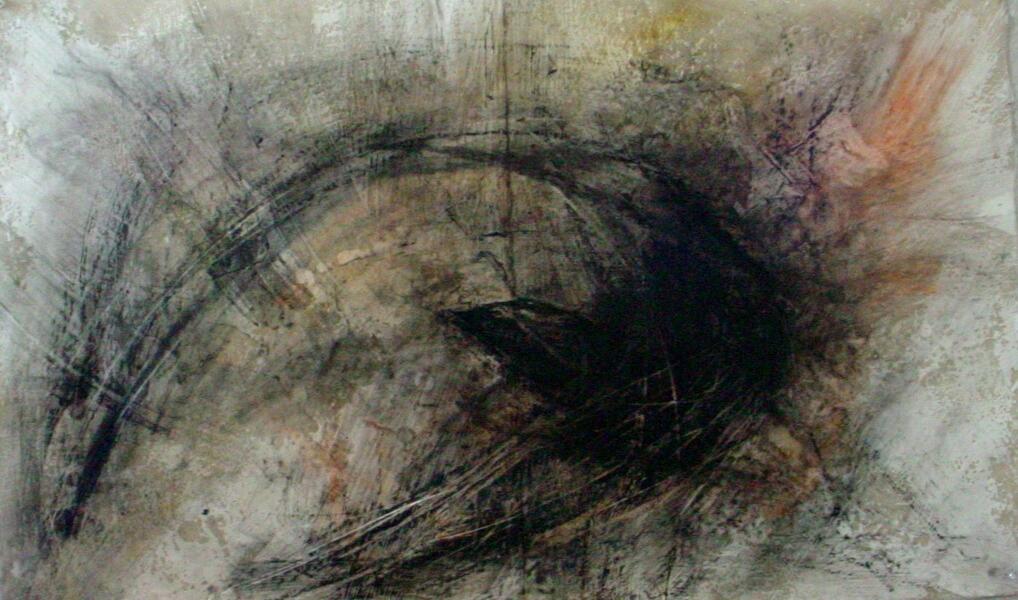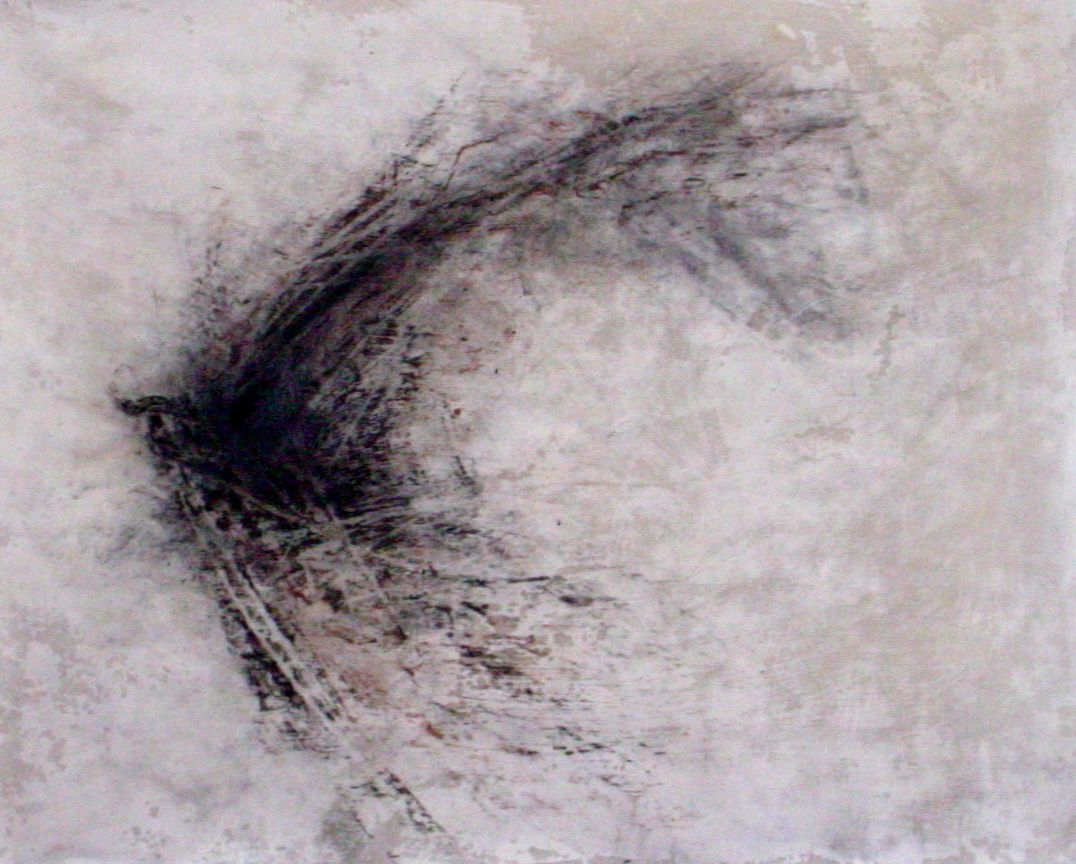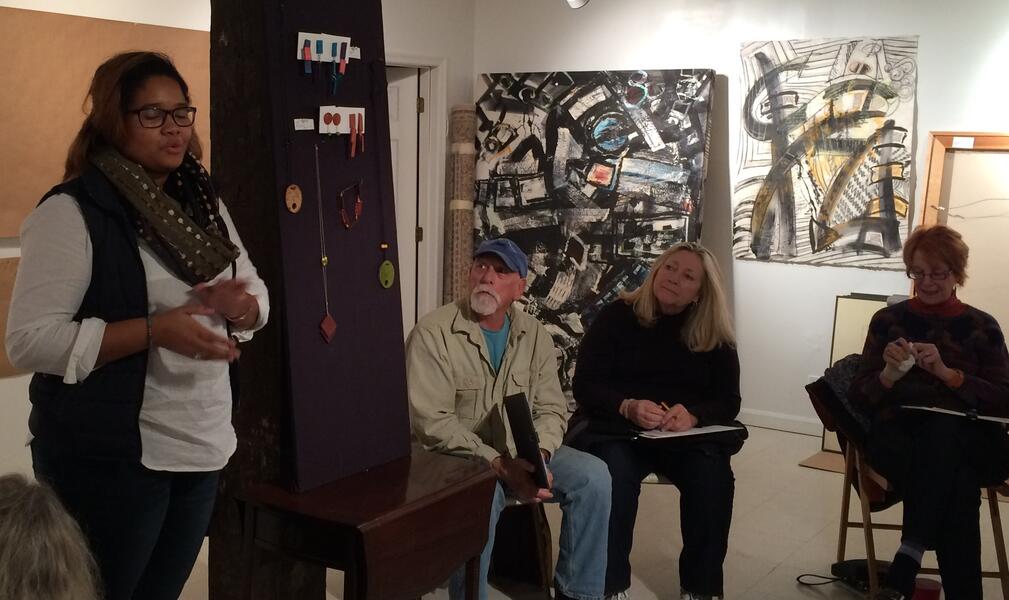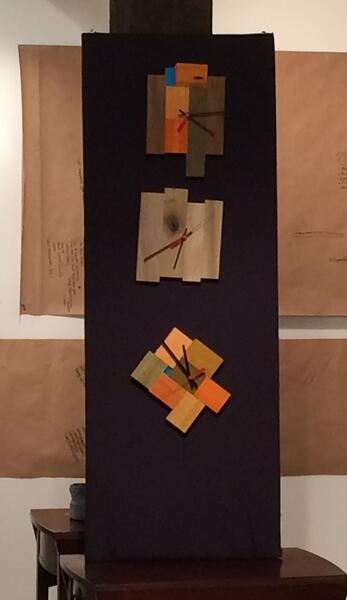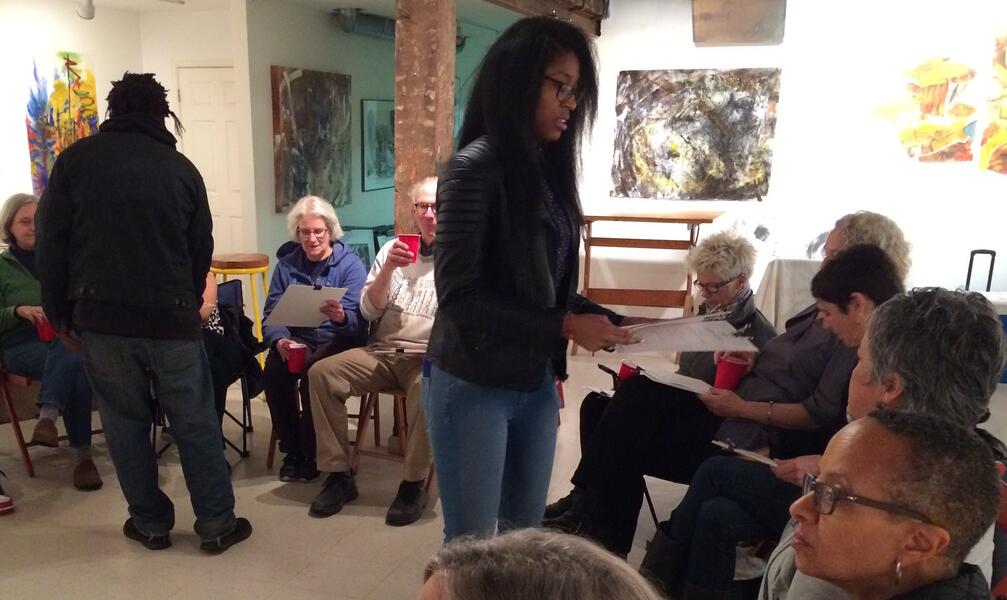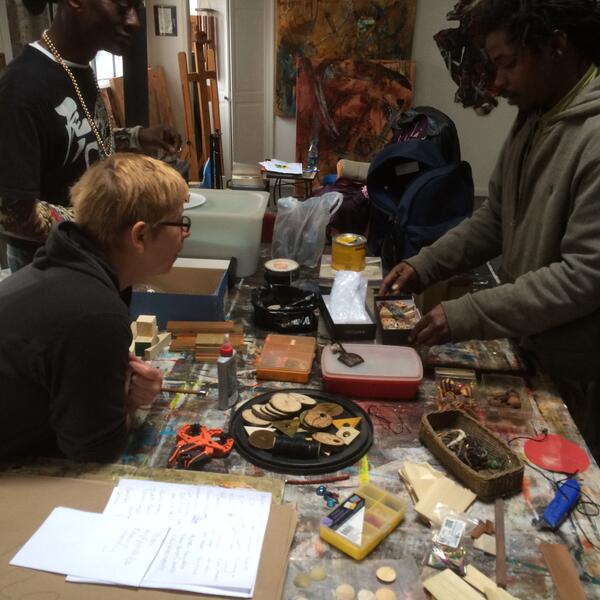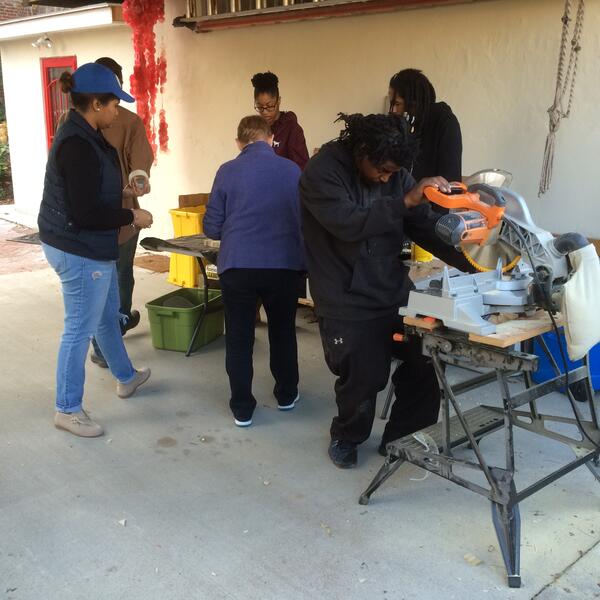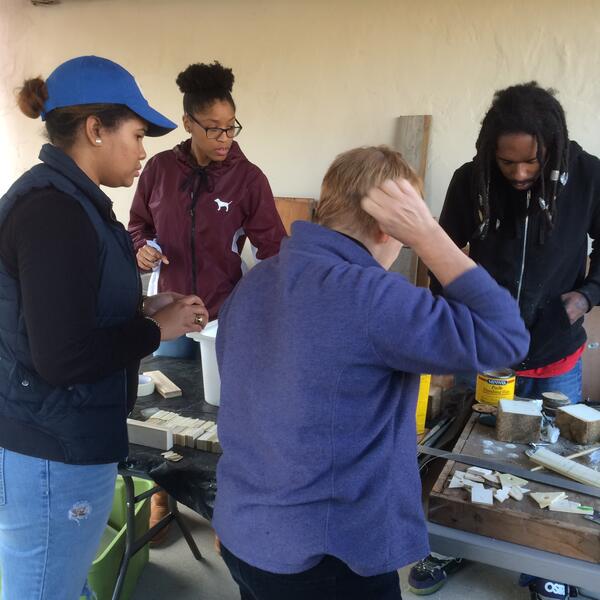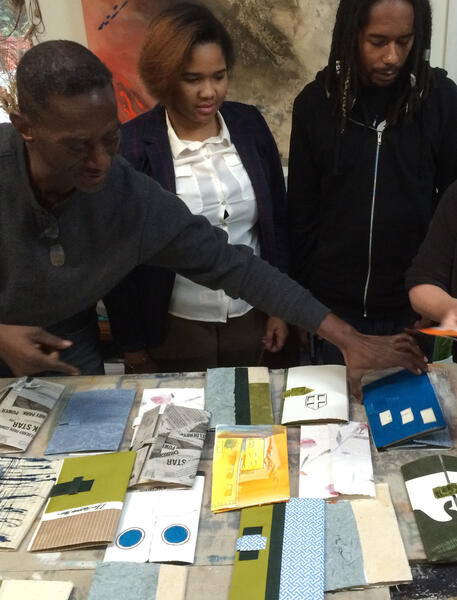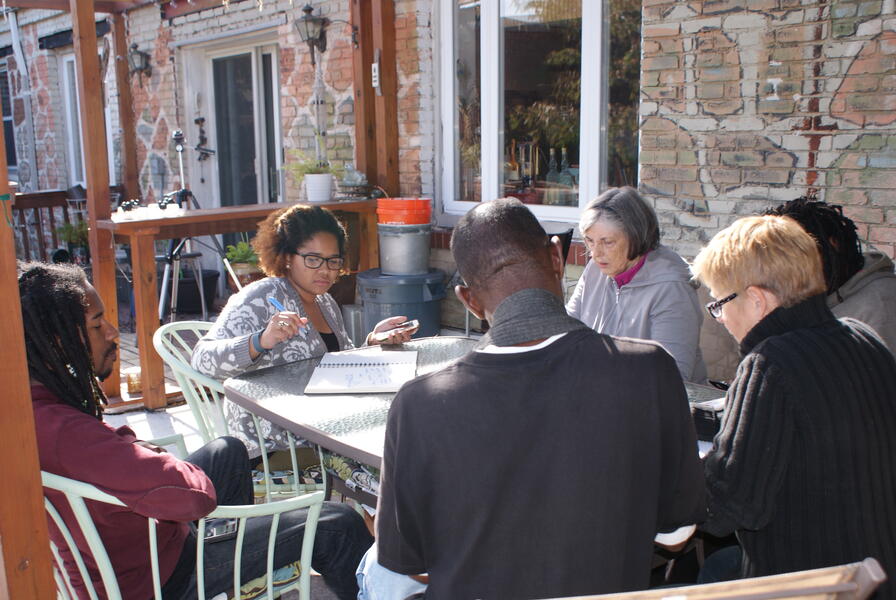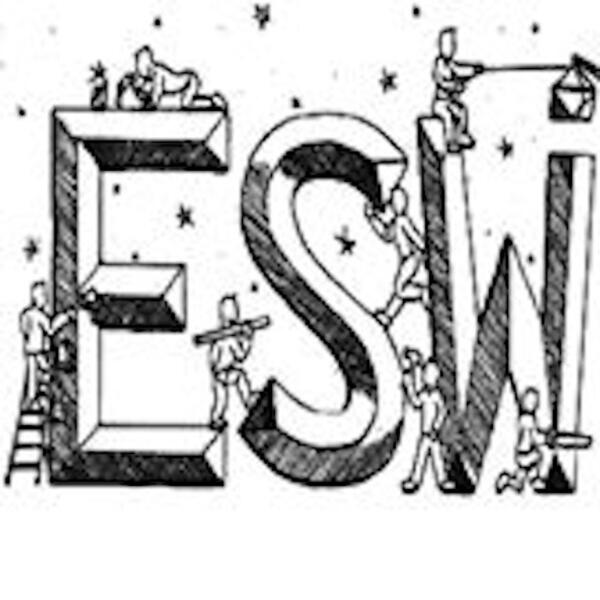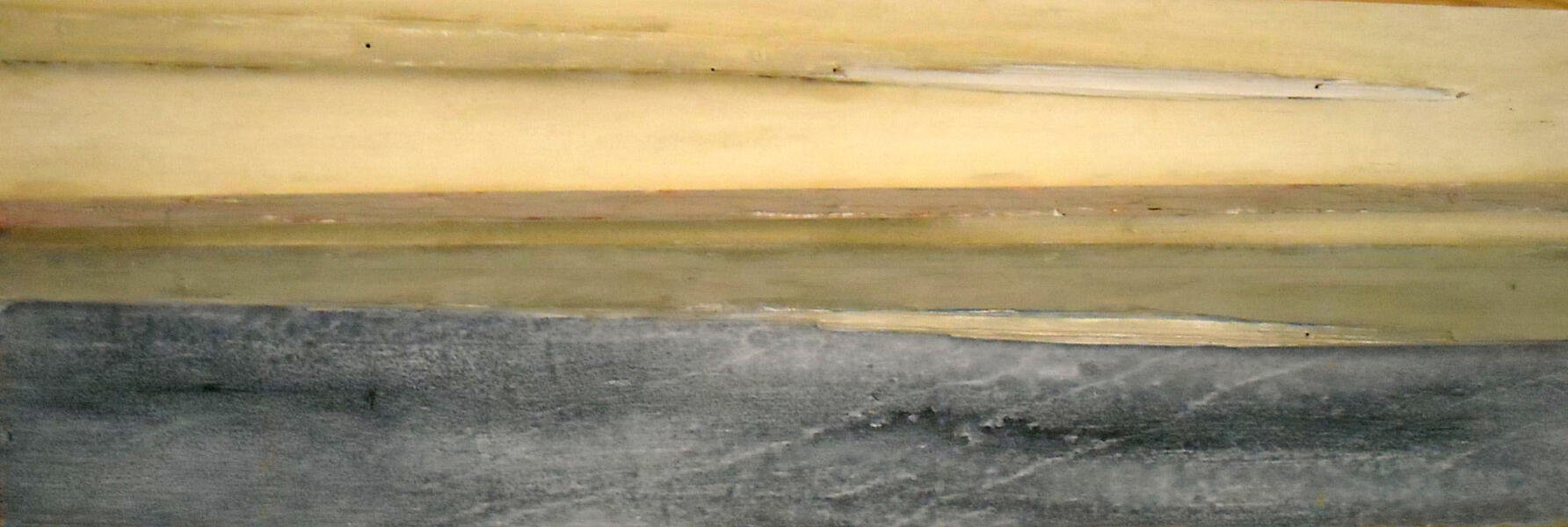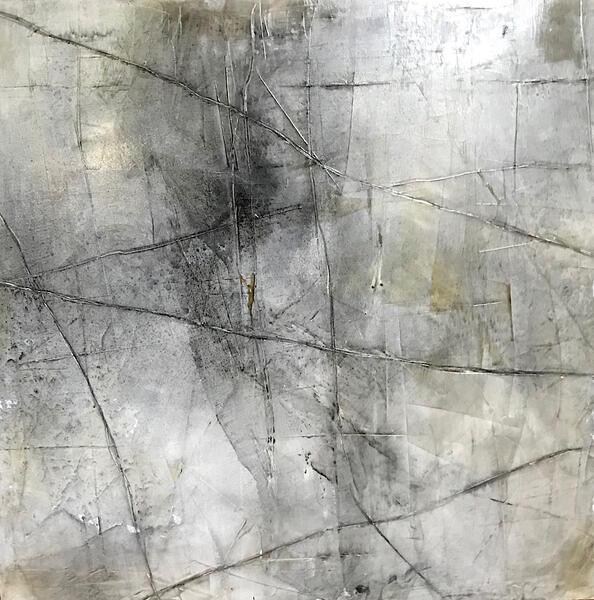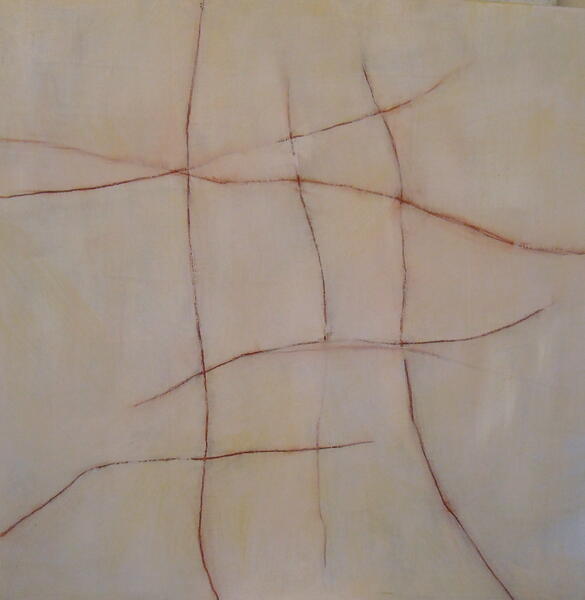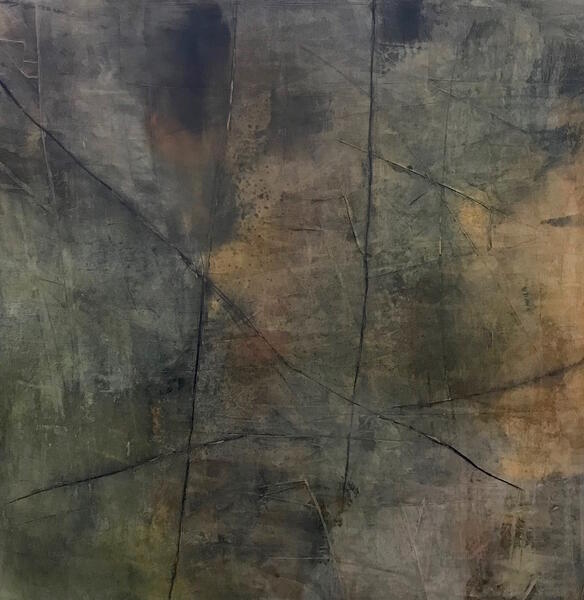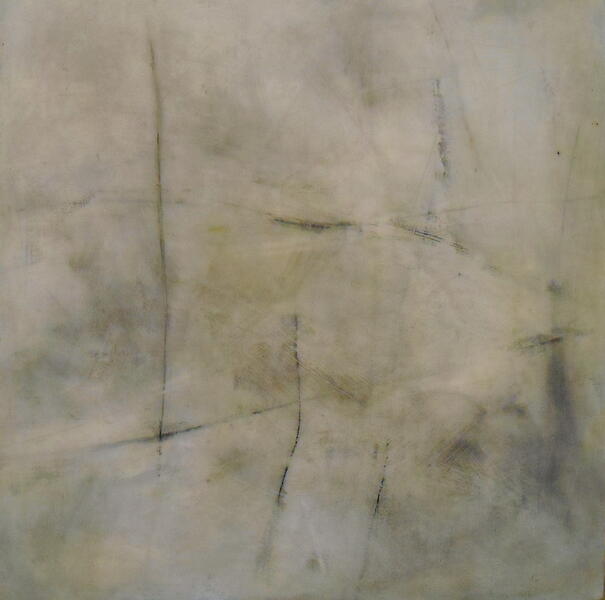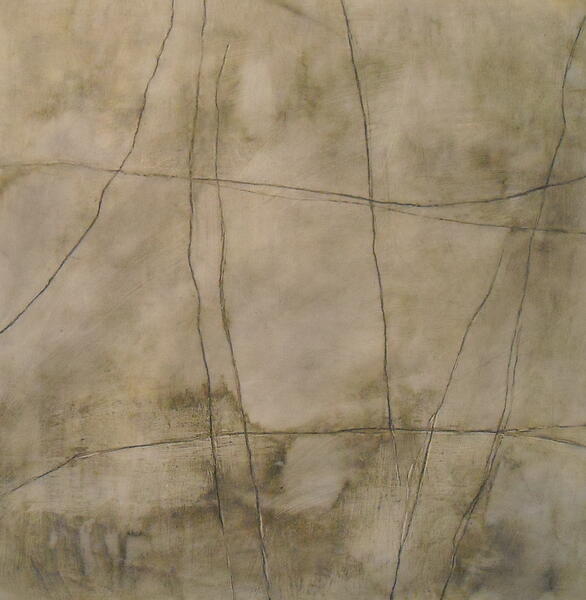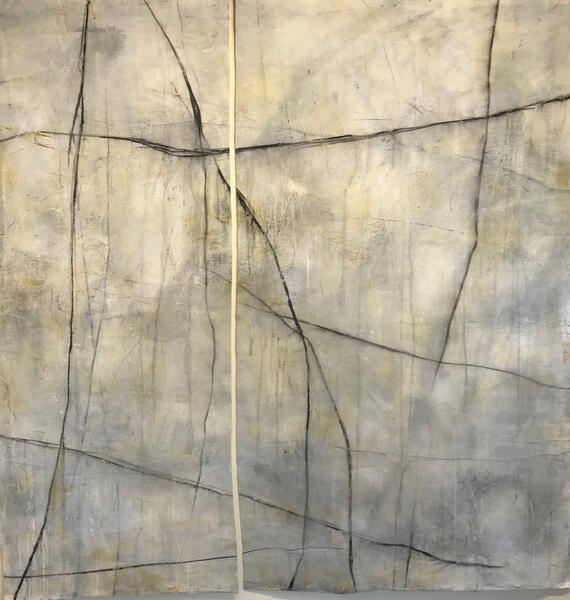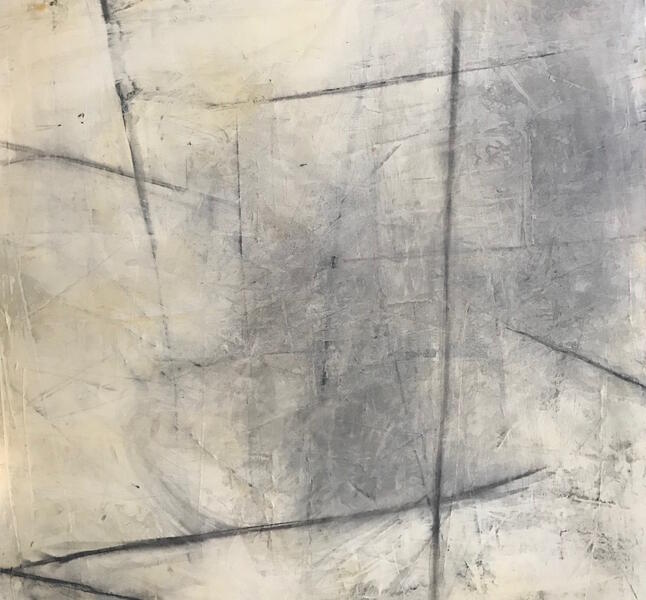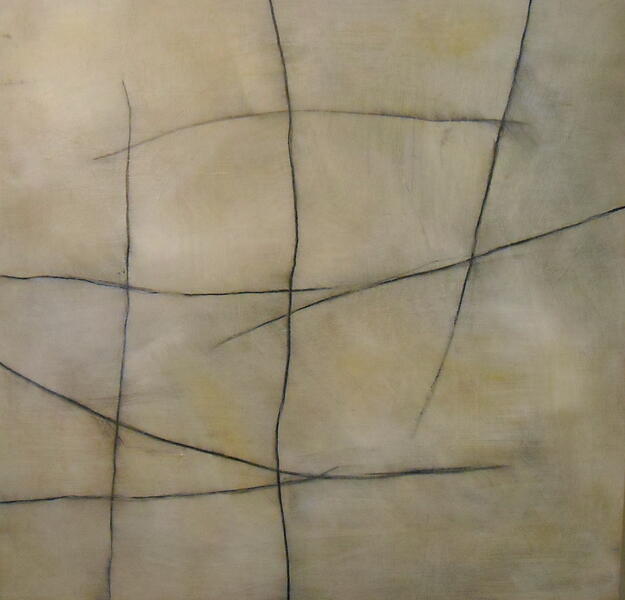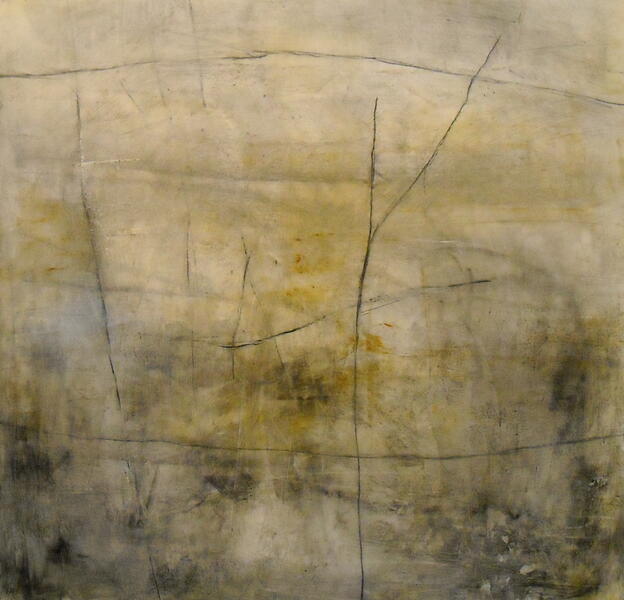About Kini
Baltimore City
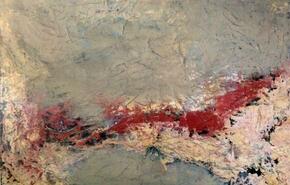
Happily living and working in Baltimore for the past 25 years.
Jump to a project:
Umbra
Ancient texts, relics and fossils are the underpinnings of culture. Our ethos is formed from the evidence we unearth. From it, we create stories that we hold to be true. The collectors of the evidence and the writers of the stories wield enormous power. We must continuously examine their interpretations. To do that, it is helpful to look into the shadows.
I made these pieces by covering wire forms with cotton and plaster. Each piece was then painted with lemon juice, wrapped in muslin and set on fire. I soaked the barbed wire in vinegar to remove its shine. The letters of the Codex and the Birds are suspended with waxed linen twine.
I made these pieces by covering wire forms with cotton and plaster. Each piece was then painted with lemon juice, wrapped in muslin and set on fire. I soaked the barbed wire in vinegar to remove its shine. The letters of the Codex and the Birds are suspended with waxed linen twine.
-
 Codex A.jpegWritten language is our primary means of cultural transmission. We must always look behind and between the letters.
Codex A.jpegWritten language is our primary means of cultural transmission. We must always look behind and between the letters. -
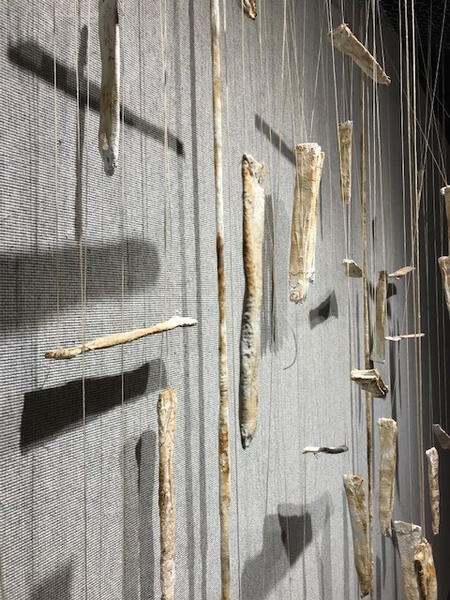 Codex detail 1.jpg
Codex detail 1.jpg -
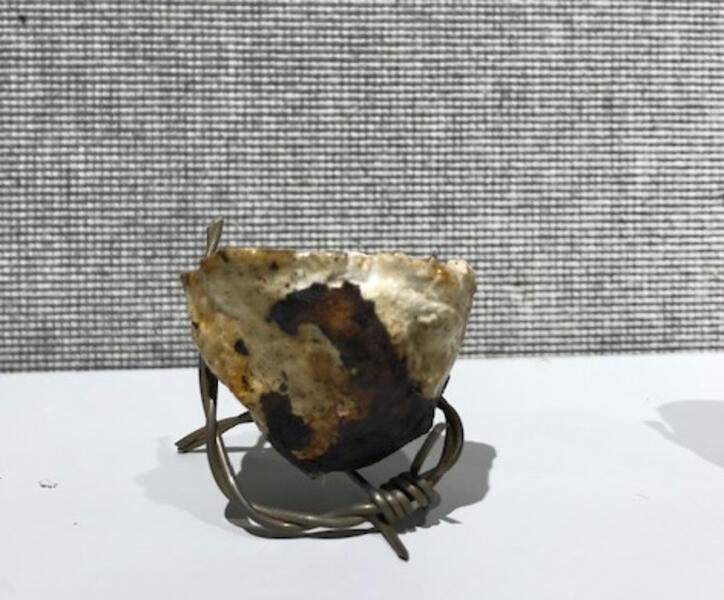 Relic 1.jpg
Relic 1.jpg -
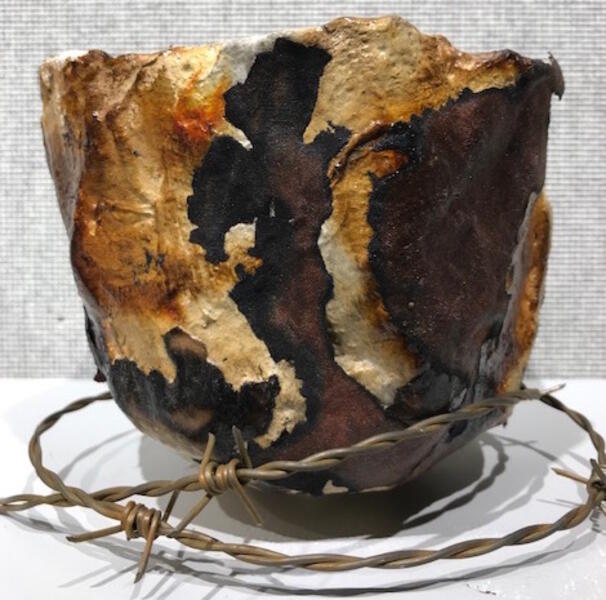 Relic 2.jpg
Relic 2.jpg -
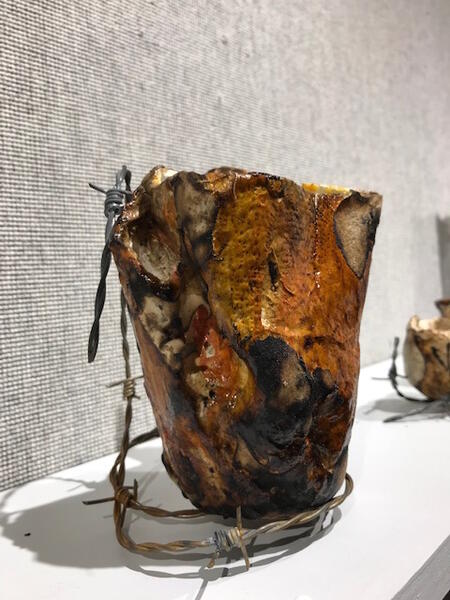 Relic 3.jpg
Relic 3.jpg -
 Relics.jpgThe objects we uncover can tell many stories. We must look at these things from all possible perspectives.
Relics.jpgThe objects we uncover can tell many stories. We must look at these things from all possible perspectives. -
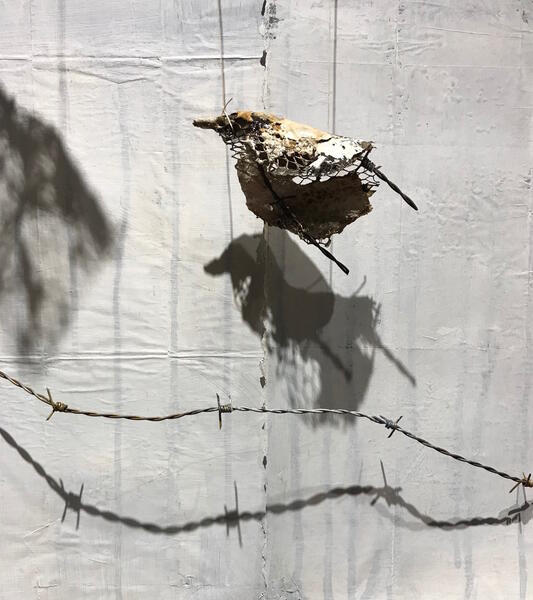 Fossil detail 2.jpg
Fossil detail 2.jpg
Capacity
Capacity was based on a verse from the Tao De Ching -- "mold a vessel out of clay, it is the space inside that makes it useful."
Any vessel that is empty has the greatest capacity.
Working with three sculptors, we presented work to examine this concept.
Any vessel that is empty has the greatest capacity.
Working with three sculptors, we presented work to examine this concept.
-
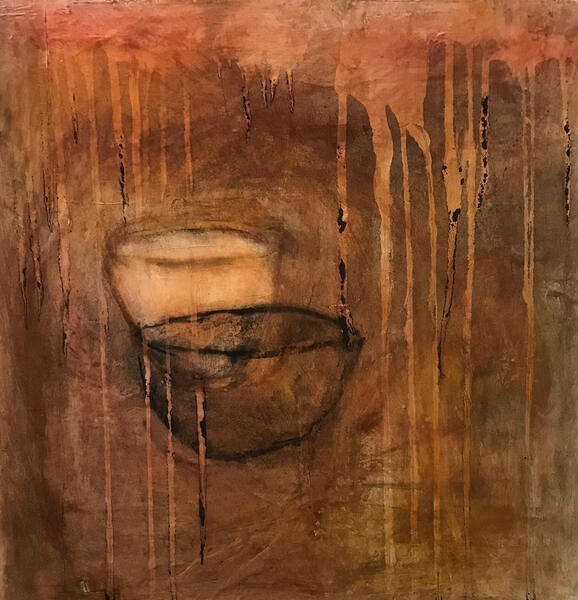 Ghost Bowl 1.jpgCharcoal and pigment on canvas. 24" x 24"
Ghost Bowl 1.jpgCharcoal and pigment on canvas. 24" x 24" -
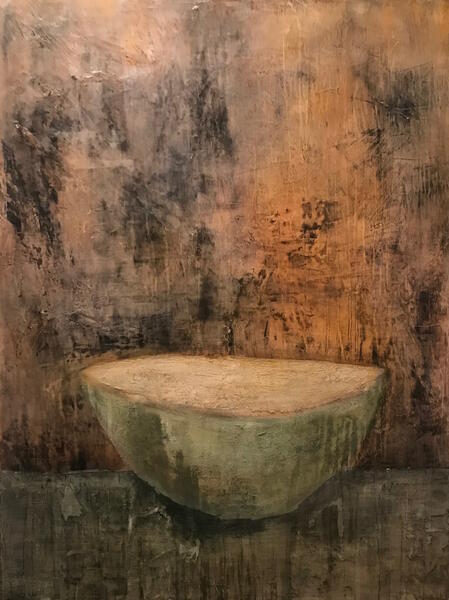 Etruscan Bowl 1.jpgInk, charcoal, pigment on canvas. 48" x 36"
Etruscan Bowl 1.jpgInk, charcoal, pigment on canvas. 48" x 36" -
 Hidden in Plain SightHidden in Plain Sight Charcoal, pigment on paper 36" x 28"
Hidden in Plain SightHidden in Plain Sight Charcoal, pigment on paper 36" x 28" -
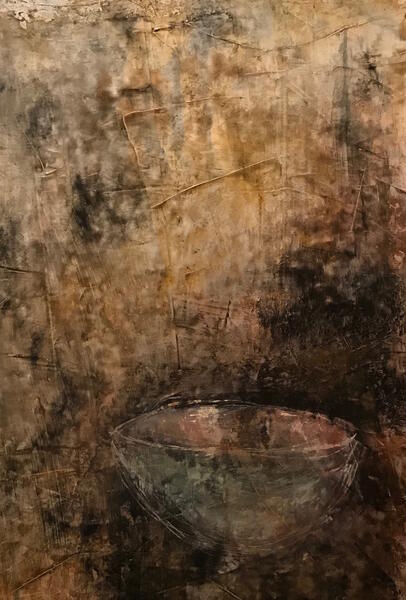 The Singing BowlThe Singing Bowl Charcoal, pigment on paper. 32" x 26"
The Singing BowlThe Singing Bowl Charcoal, pigment on paper. 32" x 26" -
 Red Etruscan Bowl.jpgCharcoal, pigment on canvas 30" x 30"
Red Etruscan Bowl.jpgCharcoal, pigment on canvas 30" x 30"
Light on Water Installation
After two years in development, I installed the work for Light on Water in September 2017.
Below is the statement that accompanied the show.
At the very inception of life, swimming in our amniotic fluid, we are wholly dependent on water. Our bodies mature, and we remain nearly 60% water. In fact, our hearts are a full 73% water. As much of a cliché as it is, and how often it is co-opted by corporate America, there is no truer statement than “water is life.”
With this work, I hope to shed light on the significance of water, to engender a desire to value and protect it. I want to evoke the movement and the deep stillness – not only in the ponds and pools around us, but also in the streams and stillness within us.
My working process mimics the creation of ponds. I pour acrylic and charcoal ink on a transparent plastic surface, allow the ink to pool and evaporate, then layer the surfaces.
I chose this luminous space to present these pieces, wanting the work to be seen in the light of the world.
Below is the statement that accompanied the show.
At the very inception of life, swimming in our amniotic fluid, we are wholly dependent on water. Our bodies mature, and we remain nearly 60% water. In fact, our hearts are a full 73% water. As much of a cliché as it is, and how often it is co-opted by corporate America, there is no truer statement than “water is life.”
With this work, I hope to shed light on the significance of water, to engender a desire to value and protect it. I want to evoke the movement and the deep stillness – not only in the ponds and pools around us, but also in the streams and stillness within us.
My working process mimics the creation of ponds. I pour acrylic and charcoal ink on a transparent plastic surface, allow the ink to pool and evaporate, then layer the surfaces.
I chose this luminous space to present these pieces, wanting the work to be seen in the light of the world.
Storm's Coming
While making some monoprints by pouring acrylic and sumi inks on pieces of wood and plexiglass, I discovered a new process in the making of this work. Rather than printing from a block, I poured the inks directly onto my work table, manipulated them with trowels, and printed directly from the table. Stains, gouges, blobs of wax and paint, holes from removed staples -- ten years of history -- helped to shape the final product.
Blackbirds
I was asked to take part in a project to give visual form to Wallace Stevens' poem, 13 Ways of Looking At A Blackbird. My stanza was "The blackbird whirled in the autumn wind. It was a small part of the pantomime."
East Side Works
I have come to a time in my life and career where, in addition to making things, I want to make things happen. As long-time community activist, I have looked to find a vehicle to combine my love of community with my art making/selling experience. With a generous grant from the Abell Foundation and fabulous support from our friends, Maxine Taylor and I launched East Side Works in November 2015.
The objective of East Side Works is to help artists gain a measure of economic independence by giving them the tools to start and sustain a cottage industry.
Working side by side with 5 East Baltimore artists, we are using a hands-on non-didactic curriculum and going through the actual steps necessary to start a business.
The mission of East Side Works is to produce affordable and trusted hand-made products that are created locally in East Baltimore by a diverse, collaborative workforce.
The objective of East Side Works is to help artists gain a measure of economic independence by giving them the tools to start and sustain a cottage industry.
Working side by side with 5 East Baltimore artists, we are using a hands-on non-didactic curriculum and going through the actual steps necessary to start a business.
The mission of East Side Works is to produce affordable and trusted hand-made products that are created locally in East Baltimore by a diverse, collaborative workforce.
Anamnesis
"...Socrates suggests that the soul is immortal, and repeatedly incarnated; knowledge is actually in the soul from eternity, but each time the soul is incarnated its knowledge is forgotten in the shock of birth. What one perceives to be learning, then, is actually the recovery of what one has forgotten. Once it has been brought back, it is true belief, and can then be turned into genuine knowledge by understanding."
Plato
Meno
c. 399BC
"Anamnesis is a figure whereby the speaker, calling to mind matters past, whether of sorrow or joy, doth make a recital of them."
J. Smith
Mystical Rhetoric 1657
At the stage of my life where I find myself forgetting many things, I also realize that there is much I remember. Memories arise, bidden or unbidden. A single memory sets off a series of associations that cascade through my entire past, sometimes re-forming into a layered, blended, overlapping whole, sometimes reducing the whole to a small, single fragment.
My work over the past several years has been an attempt to use these memory cascades to make sense of my life. By remembering and reciting the sorrows and joys of my past, I seek to understand the whole from the related and unrelated parts. This recitation encompasses a single body of work with many components. All have been created with ink, wax, charcoal and fire.
Plato
Meno
c. 399BC
"Anamnesis is a figure whereby the speaker, calling to mind matters past, whether of sorrow or joy, doth make a recital of them."
J. Smith
Mystical Rhetoric 1657
At the stage of my life where I find myself forgetting many things, I also realize that there is much I remember. Memories arise, bidden or unbidden. A single memory sets off a series of associations that cascade through my entire past, sometimes re-forming into a layered, blended, overlapping whole, sometimes reducing the whole to a small, single fragment.
My work over the past several years has been an attempt to use these memory cascades to make sense of my life. By remembering and reciting the sorrows and joys of my past, I seek to understand the whole from the related and unrelated parts. This recitation encompasses a single body of work with many components. All have been created with ink, wax, charcoal and fire.
-
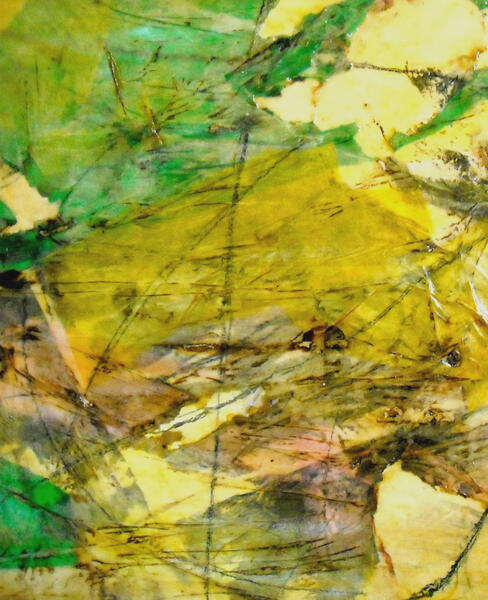 DeltaWax, ink, charcoal, and fire on wood.
DeltaWax, ink, charcoal, and fire on wood. -
 Highway 15Wax, ink, charcoal, and fire on wood.
Highway 15Wax, ink, charcoal, and fire on wood. -
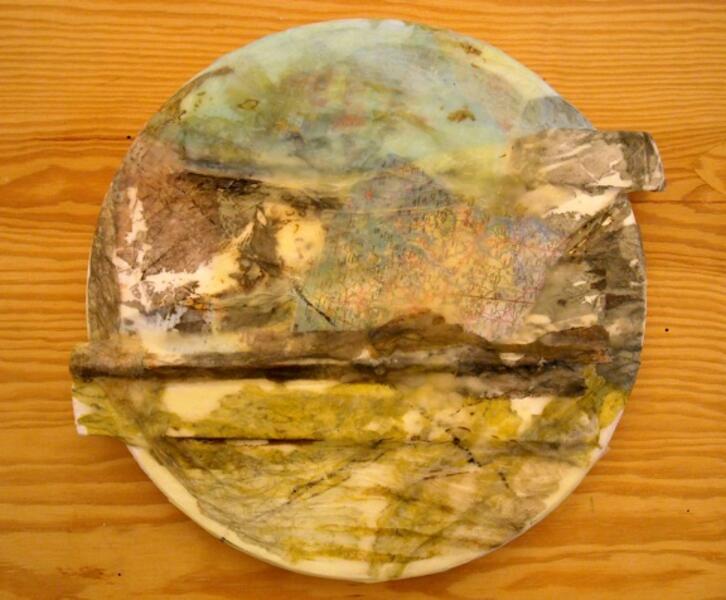 Motosko, JapanWax, ink, charcoal, and fire on wood.
Motosko, JapanWax, ink, charcoal, and fire on wood. -
 Gila WildernessWax, ink, charcoal, and fire on wood.
Gila WildernessWax, ink, charcoal, and fire on wood. -
 in the windowWax, ink, charcoal, found sight cards and fire mounted on wood.
in the windowWax, ink, charcoal, found sight cards and fire mounted on wood. -
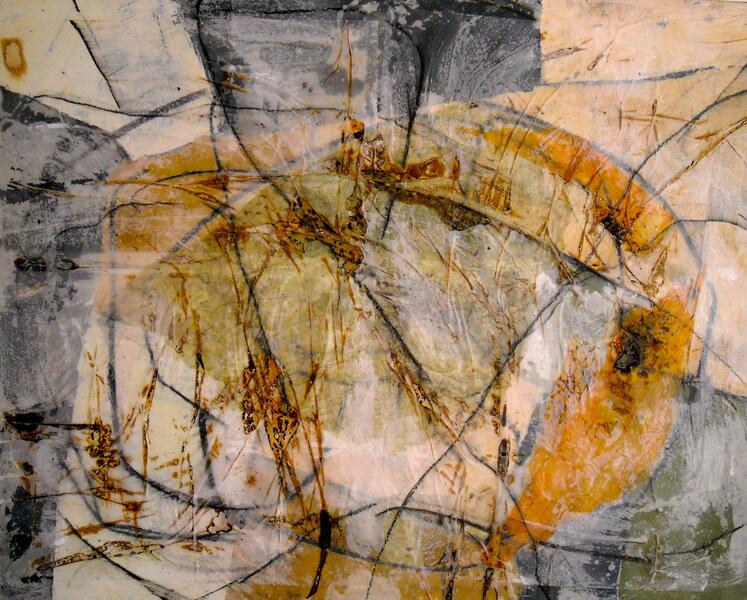 Remembered PeruWax, ink, charcoal, and fire on wood.
Remembered PeruWax, ink, charcoal, and fire on wood. -
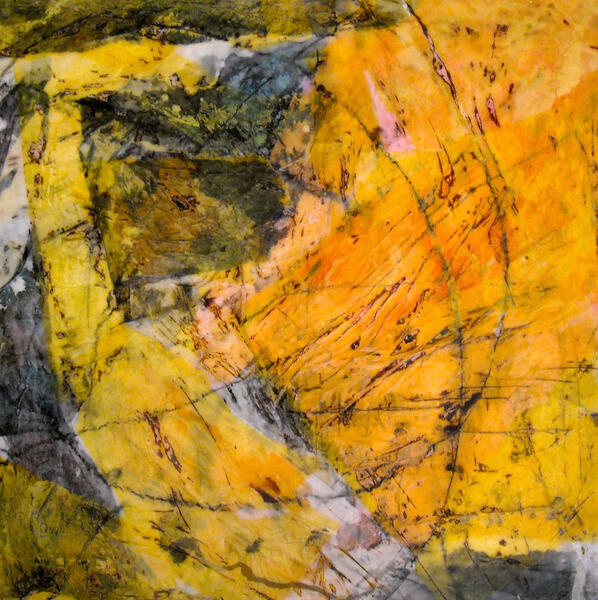 New MexicoWax, ink, charcoal, and fire on wood.
New MexicoWax, ink, charcoal, and fire on wood. -
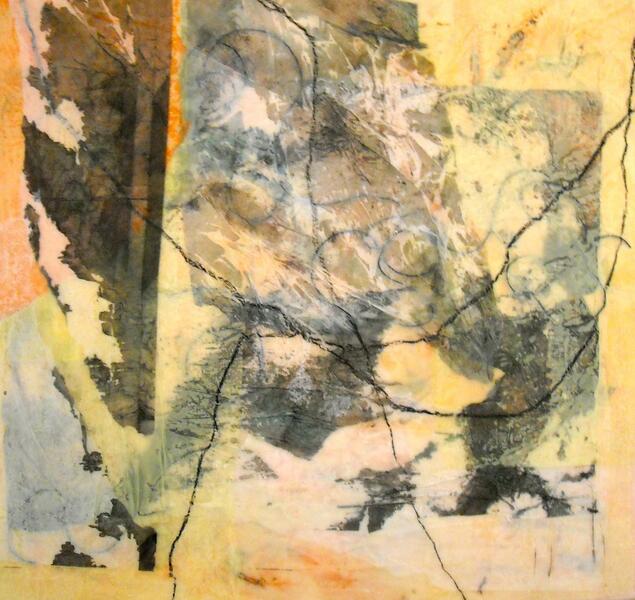 Matkatamiba CanyonWax, ink, charcoal, and fire on wood.
Matkatamiba CanyonWax, ink, charcoal, and fire on wood. -
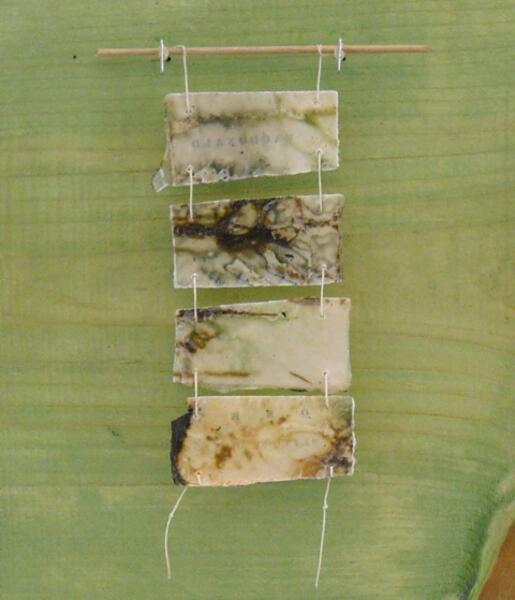 Page 100Wax, ink, charcoal, pastel and fire on found book page mounted on wood.
Page 100Wax, ink, charcoal, pastel and fire on found book page mounted on wood. -
 Page 14Wax, ink, charcoal, pastel and fire on found book page mounted on wood.
Page 14Wax, ink, charcoal, pastel and fire on found book page mounted on wood.
LandSCRAPes
When you have a house remodeled, you end up with a lot of wood. Some of it is useful for rebuilding, some of it not. This work is a way to use and honor the not-so-great wood that ended up in my studio.
Depicting some of my favorite places, marshes and beaches, LandSCRAPes were really fun to make. I took a long board, hammered a chisel into one end to create a rift, then ripped the board apart. Because this was cheap pine with uneven grain, the shapes that resulted suggested landmasses and horizon lines. When I tried using "good" wood, with a straight grain, the shapes were even and quite uninteresting.
Depicting some of my favorite places, marshes and beaches, LandSCRAPes were really fun to make. I took a long board, hammered a chisel into one end to create a rift, then ripped the board apart. Because this was cheap pine with uneven grain, the shapes that resulted suggested landmasses and horizon lines. When I tried using "good" wood, with a straight grain, the shapes were even and quite uninteresting.





